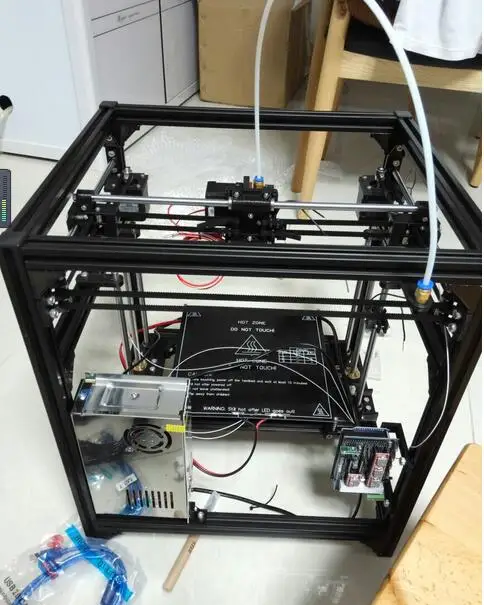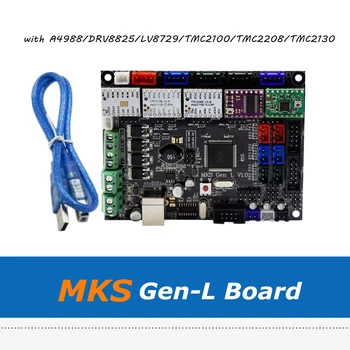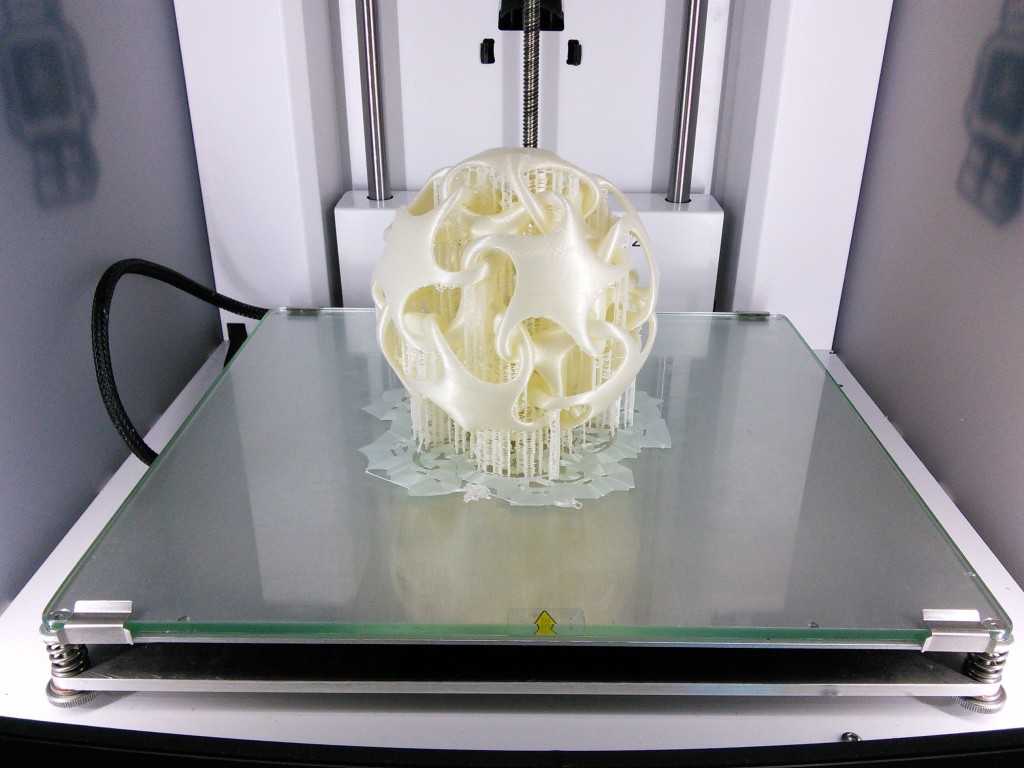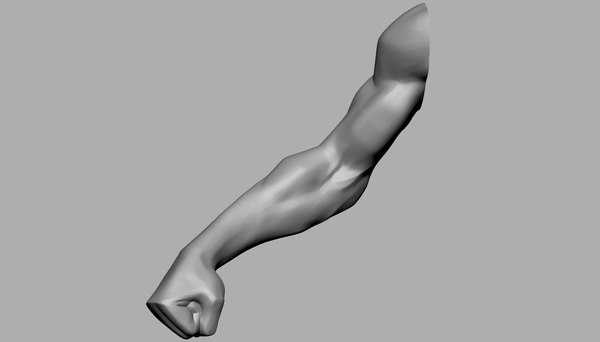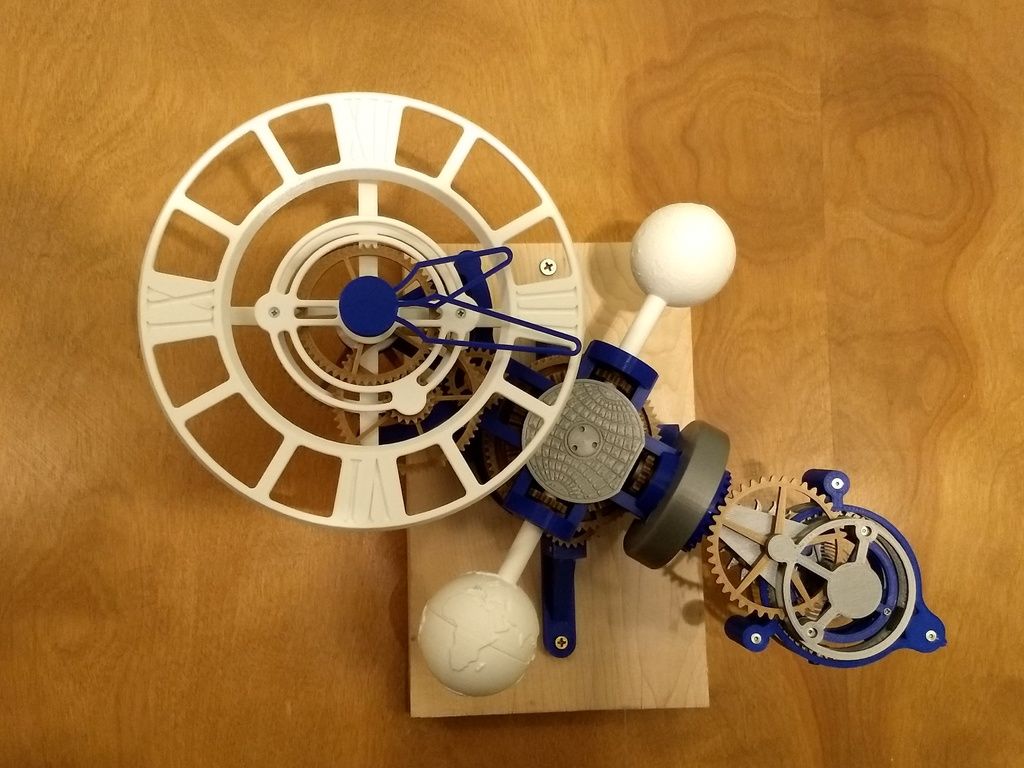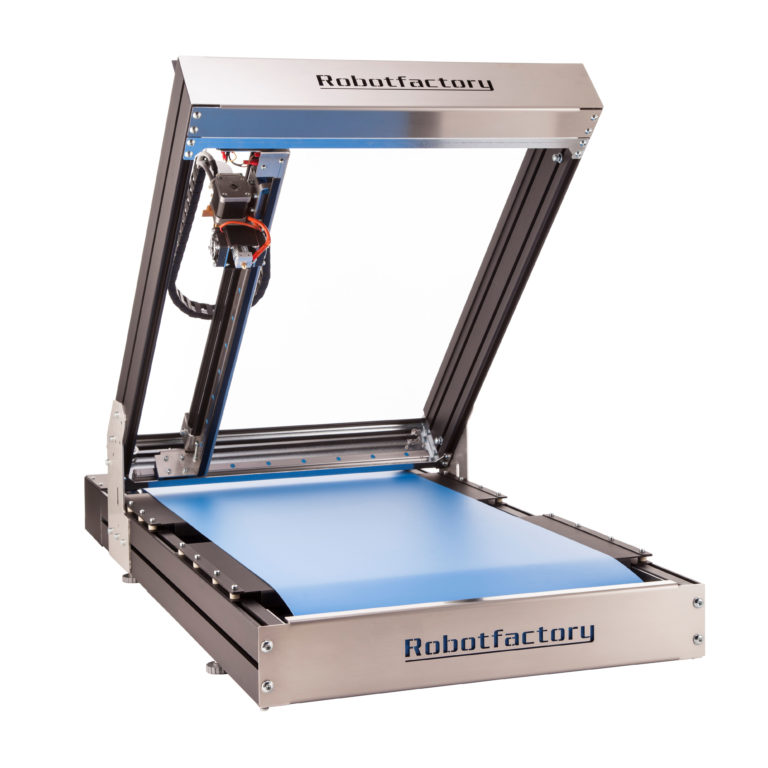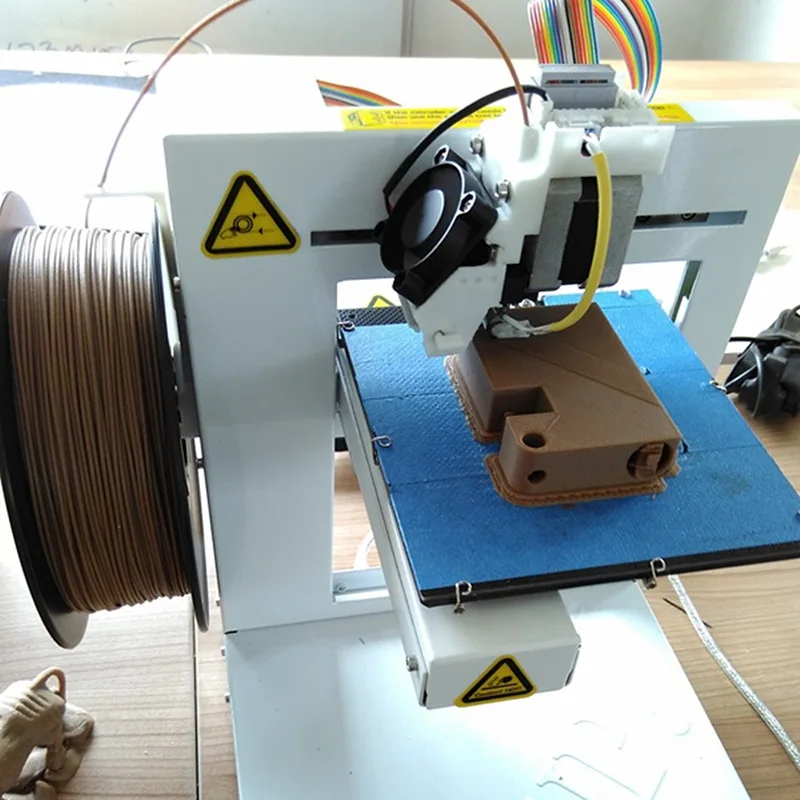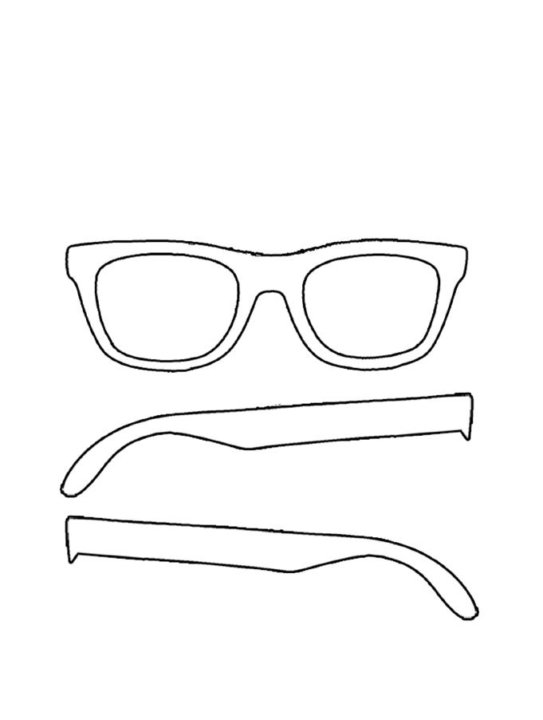Rambo 3d printer kit
RAMBo v1.4 Kit with LCD Harnesses
This all-in-one TAZ 6 3D printer motherboard is made by UltiMachine using an Arduino MEGA microcontroller board, and comes equipped with integrated stepper drivers, built in fuses, and more. The RAMBo 1.4 board is the direct replacement for the RAMBo used in the LulzBot TAZ 6 and includes the two wiring harnesses used to connect to the Graphical LCD Controller.
Works with: LulzBot TAZ Workhorse, LulzBot TAZ 6
Read more
| Compatibility: | LulzBot TAZ 3D Printer, Workhorse, Boxed for Retail, NA LulzBot TAZ 3D Printer, v6.0 Boxed for Retail, NA |
Since RAMBo v1.4 is built on the shoulders of the Arduino community, makers and hackers should consider using this motherboard for additional projects beyond controlling a 3D printer.
Curious where the product's name comes from? This motherboard is a full remix of UltiMachine's popular RAMPS design, with the Arduino MEGA and stepper drivers all on one integrated PCB. Thus, the name (R)epRap (A)rduino-MEGA-compatible (M)other (Bo)ard (RAMBo) was born.
Parts Included
One (1) RAMBo electronics board
Two (2) Graphical LCD controller harnesses
Specifications
Designed and Manufactured by UltiMachine
Logic
Arduino MEGA compatible Atmega2560 and Atmega32u2 processors are compatible with all RAMPS class firmwares
Crystals for both usb and mcu (timing accurate to 10ppm)
4 Thermistor jacks
All extra pins broken out on both processors (allows using the 32u2 for LUFA AVR programmer, etc.)
2 channel SDRAMPS compatible SPI breakout
Motor Drivers
5 A4982 1/8th microsteps motor drivers with 1,1/2,1/4,1/16 as options (2 connectors for Z-axis)
Digital Trimpot for stepper current control
Current limit on driver IC VCC to prevent permanent latchup
Microstep mode configured by MCU through firmware (no jumpers needed)
Test points for driver control signals
Step and Direction pins are on their own ports for synchronous movement capability
Extra driver ports broken out for up to 3 additional drivers (some of the motor extension pins are shared with max endstop and a pin allocated for SPI-SS extensions)
PWM DC outputs (Extruders, Fans, Etc.
 )
)Power
Three independent power rails
Heated Bed, 15A 12-35V
Extruders + fans and logic, 5A 12-35V (fuse can be exchanged for up to 10A capacity)
Motors, 5A 12-28V (fuse can be exchanged for up to 10A capacity)
Built in SMPS for 5V generation from 10V-26V Vin
PCB
Fuses
2 user replaceable NANO2 fuses
Part number: 0448005.MR
F2: motors and on-board power supply
F3: extruder heater + fan outputs and logic
1 user replaceable automotive fuse
Zoom
Previous Next
$ 250 00
250.0
Quantity
Overview
$ 250 00
250.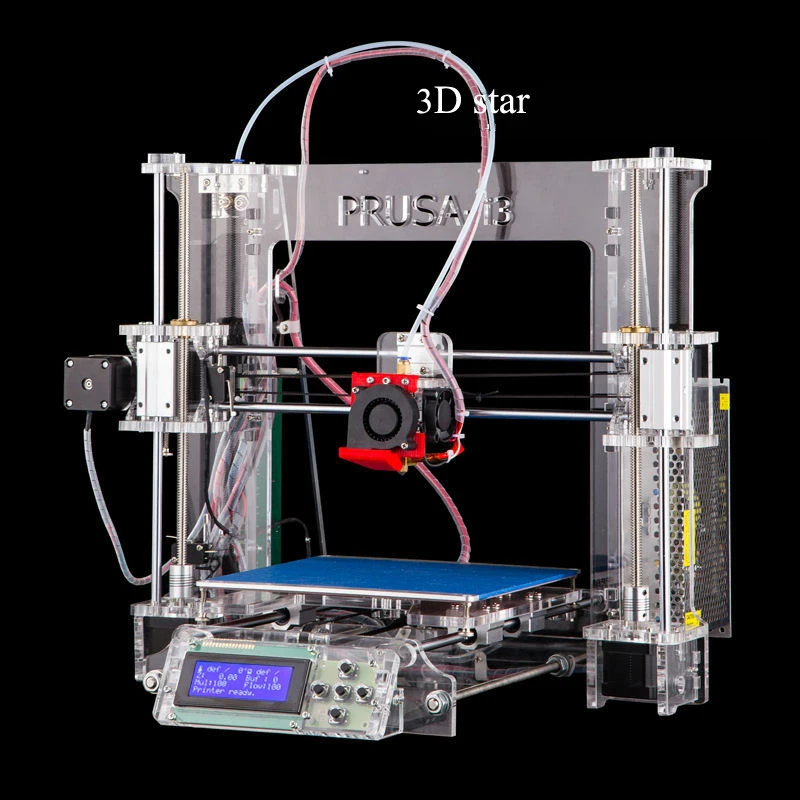 0
0
Quantity
Ultimachine RAMBo 1.3 3D Printer Controller Kit
Sorry, this product is currently unavailable
Alternative products you may be interested in:
- Home
- Store
- Ultimachine RAMBo 1.3 3D Printer Controller Kit
This pre-assembled mother board meets all your needs - you will receive all electronic components securely soldered to the PCB, as well as endstop wires and switches, pre-crimped wires...plus much more!
Remove from wishlist Add to wishlist loading...
Product No. M-AF6-WLYC
| List Price: | $210.00 |
|---|---|
Note: This product is sensitive to static. Please handle with care.
The RAMBo 1.3 board is an all in one 3D printer motherboard. It is a full remix of the RAMPS design with the Arduino MEGA and stepper drivers all on one integrated PCB.
That is where the extreme and intense name stems from: RAMBo - (R)epRap (A)rduino-(M)ega-compatible (M)other (Bo)ard...definitely not the movie...
RAMBo is designed to work with the current RAMPS generation firmwares with minimal modifications to add firmware control of the digital trimpots and the microstep setting pins.
This product is RAMBo pre-assembled where you will receive all electronic components securely soldered to the PCB, ready for use. You will receive the endstop wires & switches of your choice, wires are complete with pre-crimped & housed ends. Also included are the matching pluggable terminal blocks, two thermistor wires with pre-crimped & housed ends, a USB cable & we throw in gold connectors/headers for use on the motors & possible extra fan.
Features:
- 5 x integrated 1/16th microstep motor drivers
- 5 PWM Mosfet outputs
- 4 thermistor inputs
- Digital trimpot (no tiny knobs to tweak)
- SMPS supports hostless printing on power supply voltages from 10-24V DC
- 3 independent fuse protected power rails
- LUFA USB
- High quality connectors
What's in the Kit?
- 1 Pre-Assembled RAMBo PCB
- 2 Pre-crimped/housed white thermistor wiring, 914.
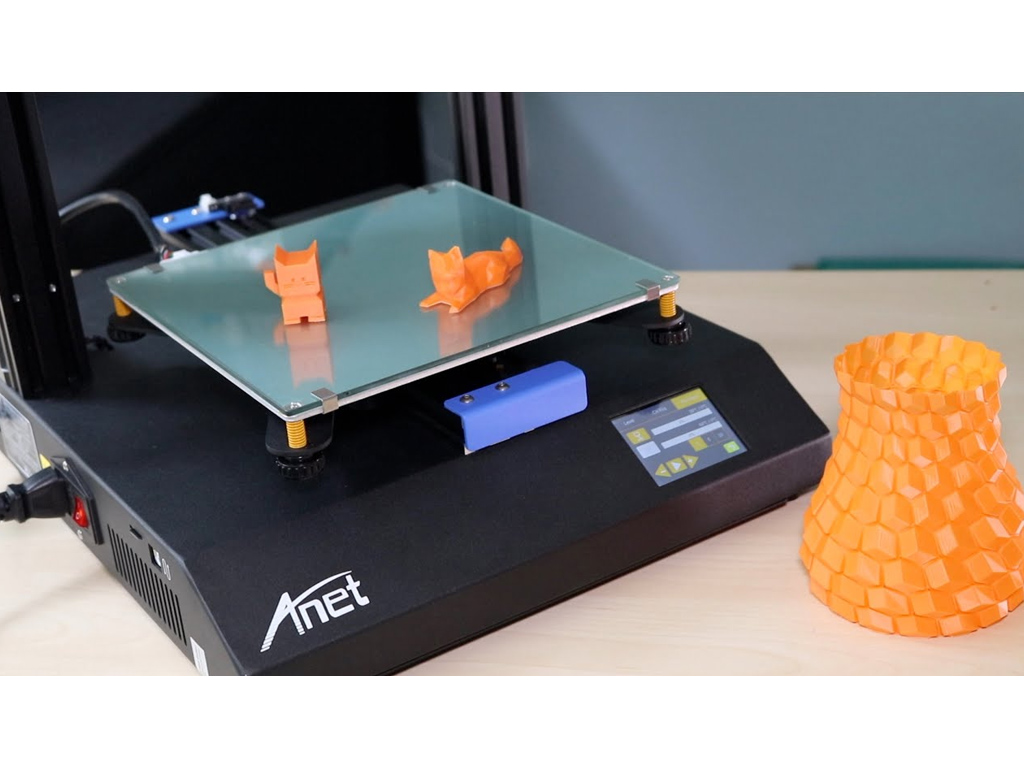 4mm (36") *thermistor not included*
4mm (36") *thermistor not included* - 3 1x2 housings
- 1 6-pin pluggable terminal block (black)
- 5 2-pin pluggable terminal block (black)
- 1 USB Cable, 1.828m (6')
- Endstops and Wiring
Endstop Wiring includes the default Mechanical Shift Wiring.
Mechanical Switch Wiring:
- 3 Mechanical switches
- 3 1x3 housings
- 6 3.18mm female connector
- 3 Pre-crimped/housed black endstop wire, 609.6mm (24")
- 3 Pre-crimped/housed white endstop wire, 609.6mm (24")
*: Drivers sold separately
**: 1/32 with provided drivers. Upgradeable to 1/128 with SD6128 drivers.
STL file Rambo Knife Set・3D Printer Model Download・Cults
1/18 Air Conditioner / Ar condicionado
1.45 €
Beer Bottle Crate / Caixa Cerveja (Cerveza)
3.29 €
1/18 Public Phone
8 €
Radio Set
9.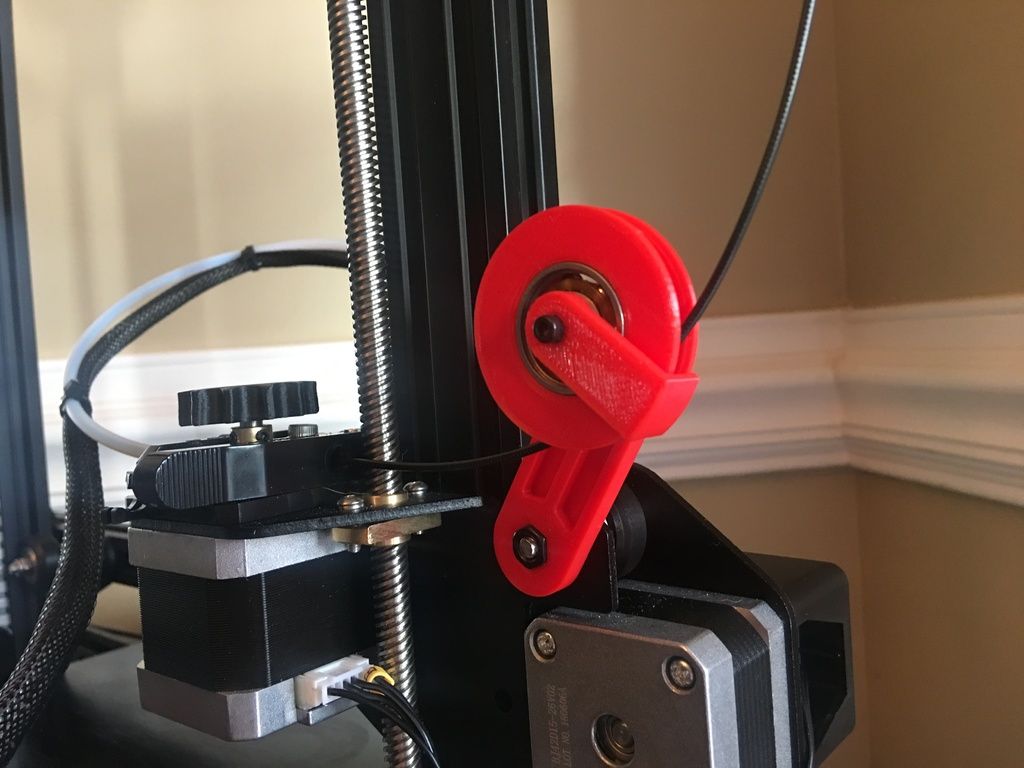 41 €
41 €
HEAD COD GHOST
13.17 €
1/18 Arcade
4 €
Rifle HK-416 2-Pack
18.82 €
Sig Sauer Custom Rifles 3-Pack
20.70 €
Best 3D Printer Files in the Miscellaneous Category
GAZ-MM-V wartime truck 1:87 (H0)
Free
Deactivated
Ball-joint articulated octopus keyring remix
Free
Gizmo GREMLINS Keychain
Free
lizard love
Free
Levi -SHINGEKI NO KYOJIN- FUNKO POP
14. 11 €
11 €
PLA Heart Gears v2
Free
STAR WARS VINTAGE MAX REBO STAY PUFT MARSHMALLOW MAN, GHOSTBUSTERS COSTUME HALLOWEEN SPECIAL, CUSTOM UNPRODUCED KENNER, HASBRO ACTION FIGURE, 3.75", 1/18, 5POA
1,87 €
Bestsellers in Miscellaneous category
flexible volute
2 €
RS-X-Bow "Government - 1911" style
6.25 €
Polestar 2 cup holder
5.44 €
BoltHAMMER - repeating crossbow pistol with quick change magazine
12.50 €
Eeveelution 9 articulated mega pack0004
10 €
SlingHAMMER - repeating crossbow pistol for 6mm 8mm 10mm or 12mm steel balls
12.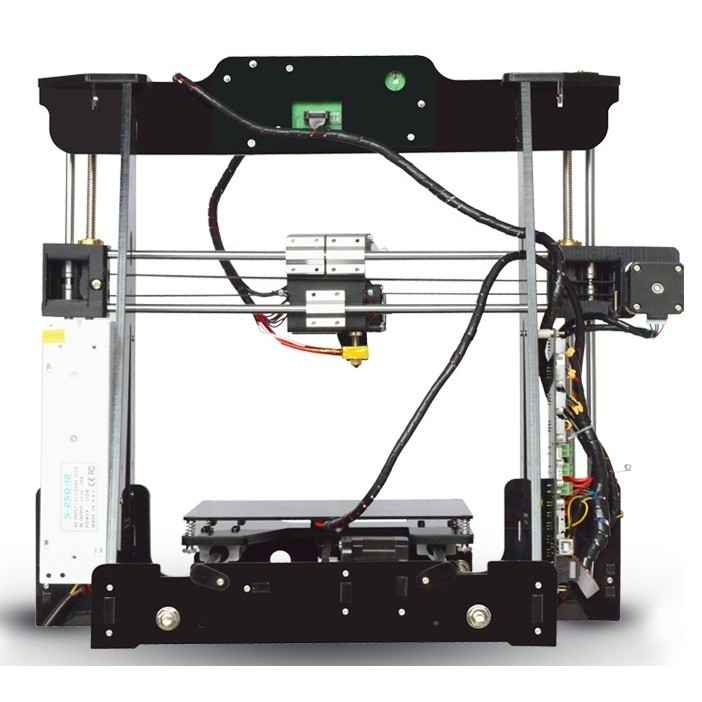 50 €
50 €
Gremlin rail 640 mm FPV
0,94 €
Charizard - pokemon with flexible articulation (seal in place, without supports)
3 €
Mr. Mario Juano
2.60 €
Kawaii cat super cute and funny [piggy bank, box, pot, decorative character]
2,99 €
Articulated Gyarados
1.99 €
Gengar pen holder
1,50 €
T-800 Terminator moving skull
15 €
Housing FLSUN V400 Version CUT
5 €
Melee Weapon Exo Armor
3.69 €
Decaying bamboo pole
0. 94 €
94 €
💖 Do you want to support Cults?
Do you like Cults and want to help us continue our journey on our own ? Please note that we are a small team of 3 people , so supporting us in maintaining activities and creating future developments is very easy. Here are 4 solutions available to everyone:
-
AD: Disable your AdBlock banner blocker and click on our banner ads.
-
AFFILIATION: Shop online with our affiliate links here Amazon.
-
DONATIONS: If you want, you can donate via Ko-Fi here 💜.
-
INVITE YOUR FRIENDS: Invite your friends, discover the platform and the great 3D files shared by the community!
Military 3D printers - big overview
Overview: Military 3D printers.
Source: https://all3dp. com/
com/
The military industry has always been at the cutting edge of progress: many inventions either began their life as military or dual-use products, or, in the very first years after their appearance, were involved in this area . In this age of digital technology, this fate has not escaped 3D printing.
3D printers are actively used by military contractors and direct employees of all branches of the military.
In this article, we will talk about the use of 3D printing in the military-industrial complex around the world: from providing military equipment with spare parts, to operational printing of drones and buildings anywhere.
In Russia,
JSC "Federal Research and Production Center "Titan-Barricades", which develops missile systems and military vehicles, bought and uses in prototyping a kit based on the XJRP SPS450B 3D printer. The kit consists of two devices: directly a 3D printer with a large print area, working on SLA technology, and a polymer curing chamber.
| XJRP SPS450B 3D Prototyping Kit. |
| Source: http://pechat3d.ru/ |
The 3D printer is planned to be used to create miniatures of future parts, cases or mechanism assemblies. The first product made on this 3D printer was a prototype wheel with a tread.
Ilyushin specialists plan to produce some simple parts for the Il-112V military transport aircraft using 3D printing.
| Model of the Il-112V transport aircraft. |
| Source: © ITAR-TASS |
Together with specialists from the Voronezh Aircraft Plant (VASO), PJSC Il specialists use 3D-printed parts as test samples, which will be replaced with originals made by the classical method before departure. But in the future, it is planned to master the printing of simple components that will be installed on mass-produced aircraft.
Pavel Chernikov, First Deputy General Director of PJSC Il, said: “The IL-112V is being created from scratch, and many parts and components need to be improved during installation on the aircraft. We started using a 3D printer to see how right or wrong our calculations were. Such technologies make it possible not to interrupt the finalization of finished products, which, in turn, significantly reduces the installation time of equipment and reduces the cost of the production process.”
Research and Production Corporation "Uralvagonzavod" named after F. E. Dzerzhinsky purchased a 3D printer S-Max manufactured by ExOne.
| ExOne S-Max 3D printer. |
| Source: http://3dtoday.ru/ |
This printer is designed for making sand molds. Molds are used for casting metal blanks. As the deputy chief metallurgist of NPK Uralvagonzavod said: “We will no longer have to manufacture expensive foundry equipment for experimental, new products and complex castings of small series.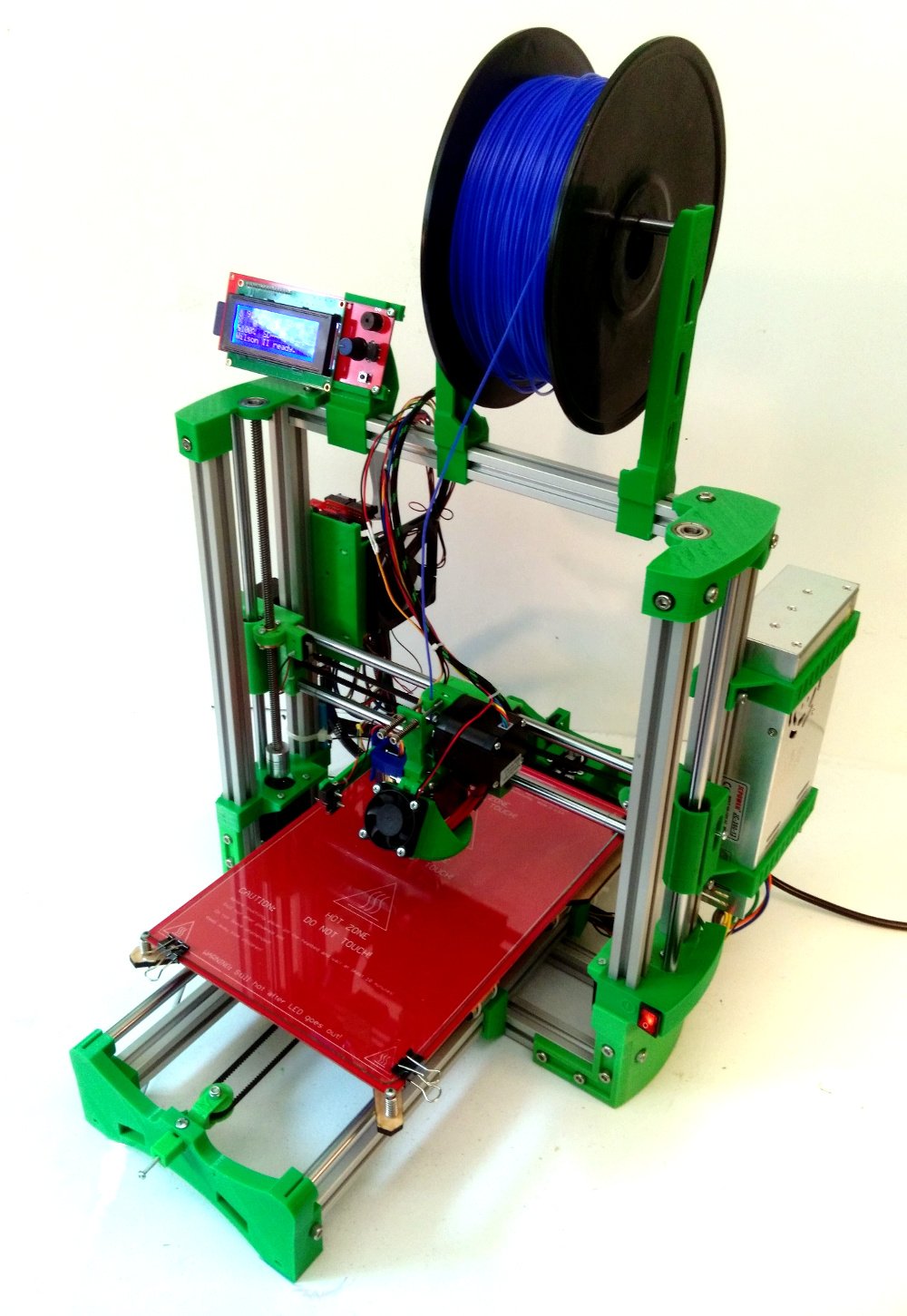 It will be enough for a designer to develop a 3D model of the required casting, according to which, also in 3D, the mold is made. The finished cores will go to the foundry. In addition, they can be transported to solve the problems of the corporation over any distance."
It will be enough for a designer to develop a 3D model of the required casting, according to which, also in 3D, the mold is made. The finished cores will go to the foundry. In addition, they can be transported to solve the problems of the corporation over any distance."
| A sand mold produced by the S-Max 3D printer, used for casting metal blanks. |
| Source: http://3dtoday.ru/ |
This is not the first professional 3D printing system that Uralvagonzavod uses. In 2015, the company purchased a Fortus 400mc 3D printer manufactured by Stratasys Corporation. This printer is used in the production of parts for the T-14 "Armata" tank and other vehicles manufactured by Uralvagonzavod.
| Tank T-14 ("Object 148") on the platform "Armata". |
| Source: OAO NPK Uralvagonzavod |
Representatives of the company note that the introduction of 3D printing saves time and production resources.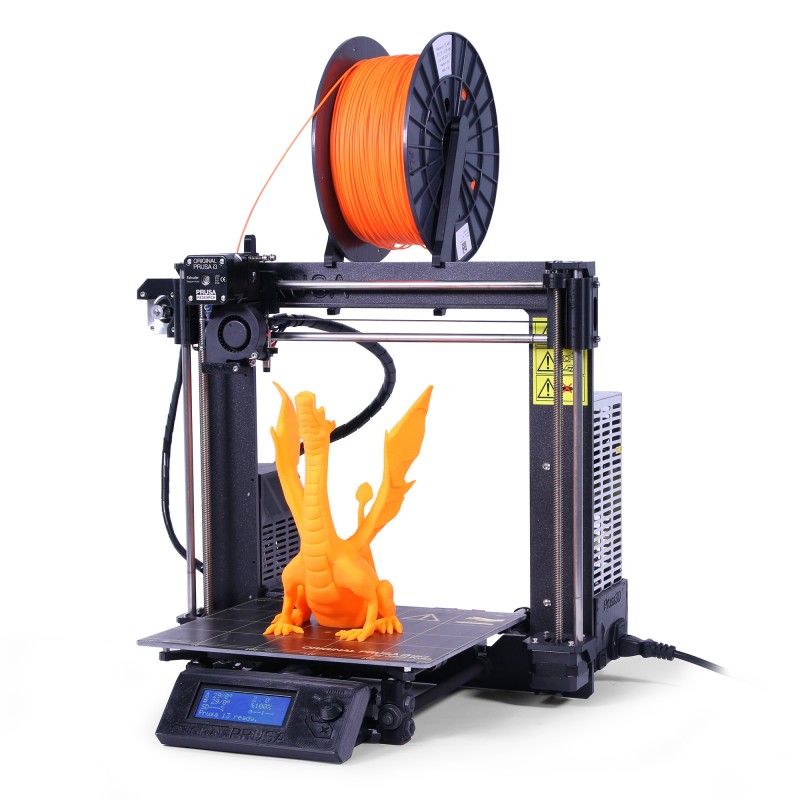 It is not required to spend forces on turning metal samples. If a part doesn't fit, it's easier to reprint it than remake it.
It is not required to spend forces on turning metal samples. If a part doesn't fit, it's easier to reprint it than remake it.
Russian Helicopters Holding, according to its CEO Andrey Boginsky, plans to 3D print about a hundred parts for rotorcraft by 2020.
| Andrey Boginsky. |
| Source: © Yuri Smityuk/TASS |
In 2018-2019, it is planned to conduct a series of bench tests in order to obtain all the necessary certificates for printed parts by mid-2020. In total, it is planned to test about a hundred parts and assemblies.
Compared to traditional parts, 3D-printed parts are lighter and their production will be deployed at the Kazan Helicopter Plant. As a result of the use of parts obtained by 3D printing, the holding plans to reduce the cost of products.
In the world
The road of army 3D printing is not paved with roses. When we hear about cool 3D printed military projects, we have to consider some of the challenges that come with doing them.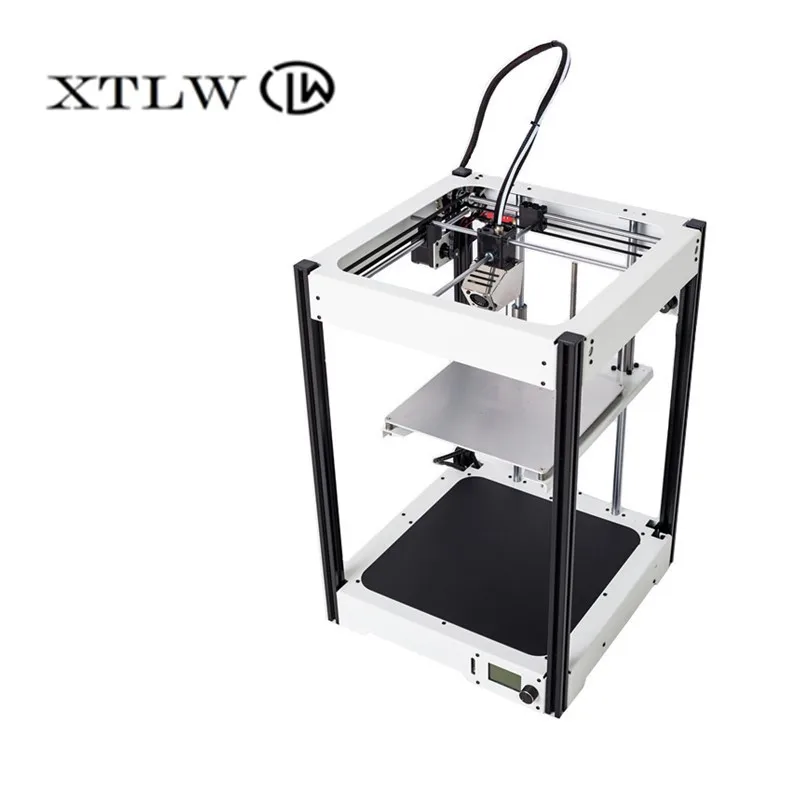
| Soldiers get acquainted with FORTUS. |
| Source: https://all3dp.com/ |
Quality certification problem. Many things that the army is supposed to produce using 3D printing are designed for harsh operating conditions, they are subject to high requirements for compliance with dimensions, geometry and quality, and an unsuccessfully printed part can lead not only to monetary losses, but also to the death of soldiers . This issue will most likely be resolved by certification of the 3D printers themselves.
Insufficient printing speed for the army. Even the most expensive 3D printer is not fast enough. There are also issues of privacy/security, copyright, and many other little things that are not obvious at first glance.
While these issues are being addressed, the US Department of the Navy has decided to host a 3D printing hackathon. 12 organizations were invited to participate, which showed their developments in the field of 3D printing for the Navy. According to the participants, fully or partially printed inventions: “Allow to improve the ability to maintain combat readiness.”
According to the participants, fully or partially printed inventions: “Allow to improve the ability to maintain combat readiness.”
One of the new and memorable developments was the four-legged transporter robot (MeRlin). It turned out to be quite compact and can run, jump and walk up and down stairs. Three-dimensional printing made it possible to create, right in the supporting frame of the robot, a hydraulic manifold that serves to transfer energy to the robot drives. Those interested in robotics will find Merlin similar to the transport robots of Boston Dynamics.
| The device of the robot MERLIN (Merlin). |
| Source: https://all3dp.com/ |
Aviation
A 3D-printed drone was launched from one of the British Royal Navy ships at sea, HMS Mersey. The device was created in collaboration with the University of Southampton.
Launch of a 3D printed drone.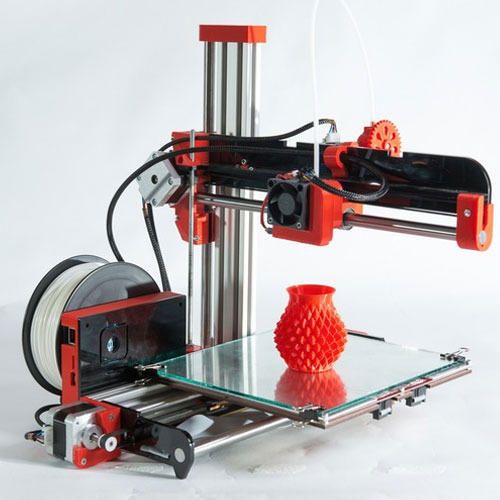 |
| Source: https://all3dp.com/ |
Body made of nylon, laser sintered. With a wingspan of one and a half meters, the drone weighs only three kilograms. The main task of this project was to create a small drone for exploring the surroundings, which can be quickly printed on board the ship.
The drone, named SULSA, was equipped with a small video camera. Management was carried out by researchers from Southampton using video cameras. The flight, with a range of 500 meters, lasted only a few minutes, but proved that 3D printed drones could be launched from the sea.
| The route of the SULSA drone during a test flight. |
| Source: https://www.southampton.ac.uk/ |
3D printing solves the problem of ship capacity by allowing equipment to be printed at sea as needed. The only thing you need to have on board to print a drone is a 3D printer and a supply of nylon, which is disproportionately cheaper than a case made using traditional technologies, and takes up much less space.
The only drawback is the print speed, but it is expected to improve in the near future. Engineers from the American Army Research Laboratory (ARL) are trying to fight this shortcoming. They are developing drones that can be made within a day. Engineers are building drones that can be used to assist soldiers in communication, delivery, and aerial surveillance.
| Eric Sopero demonstrates his drone to US military personnel. |
| Source: https://all3dp.com/ |
Drones are made using off-the-shelf motors and propellers, but their body is almost entirely 3D printed. The maximum speed of the drone is 55 miles per hour. Drones can either be controlled by the operator from the remote control or operate in a completely autonomous mode. Work continues to reduce noise and increase flight range, maneuverability and payload.
The US Army is working with the Marine Corps to develop an unmanned vehicle parts catalog that can be downloaded to an employee's tablet. The software of this catalog allows you to order or 3D print a product directly from it.
The software of this catalog allows you to order or 3D print a product directly from it.
| American soldier with a drone. |
| Source: https://all3dp.com/ |
In addition to experiments with drones, 3D printing is also used in “big” aviation.
For example, the US Air Force has announced that it will 3D print toilet seats for military transport aircraft. The announcement comes after a scandal erupted when it was reported that each toilet seat cost the Air Force $10,000 to replace.
| Airplane seat for $10,000. |
| Source: https://all3dp.com/ |
The public, which already believed that the government did not always save on military spending, was extremely outraged. After an investigation initiated by one of the senators, the military department announced that it would print toilet seats on 3D printers.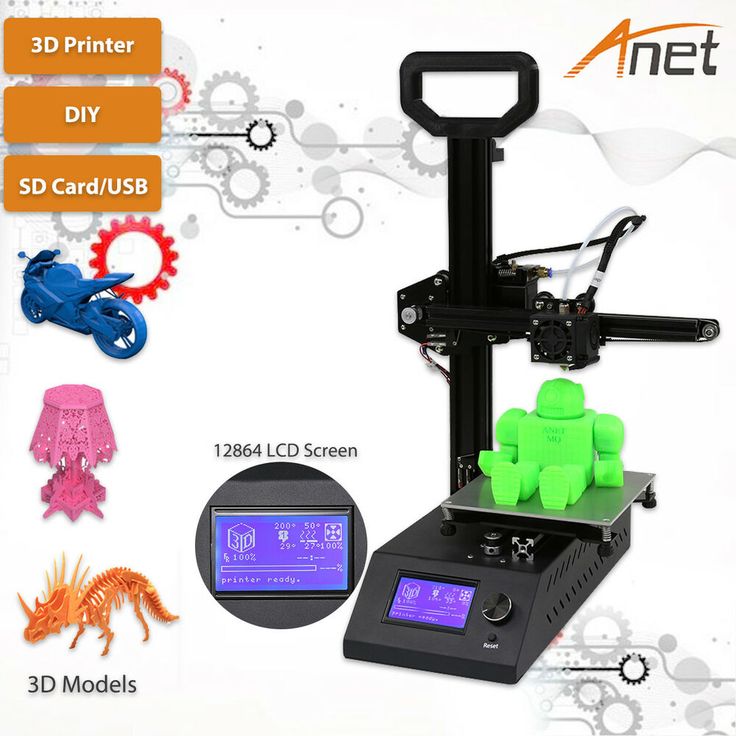
Why is the toilet lid so expensive? These covers were mass-produced by Lockheed Martin, and in 2001 this giant of the military industry stopped their production. In addition, the military department explained that the C-5 toilet seat is not only a cover, but also part of the lavatory wall, which is designed to protect the body of the aircraft from corrosion that can be caused by urine.
According to the manufacturer, its high cost is due to the need to suspend the production of other goods. In the case of independent production of the Air Force, the spare part will cost only $300.
The manufacturer now claims that the US Air Force does not own the copyright to this cap. It is not known how this lawsuit will end, but the Air Force says that they will no longer buy this spare part, because they can make it themselves much cheaper.
As stated by the department: “The use of 3D printing allows us to create parts that are no longer being produced, resulting in significant cost savings. ”
”
| C-5 transport aircraft. |
| Source: https://all3dp.com/ |
Another example of 3D printing was demonstrated by the Maryland Marines. Using 3D modeling and 3D printing, they made a $70,000 F-35 fighter jet part for just 9 cents. The Marines were assisted by Sam Pratt, a mechanical engineer in the design office of the Carderock Additive Technology Factory.
Sam revealed that he was with a support platoon in South Korea teaching CLB-31 Marines how to design 3D models and how to use 3D printing. His main task was to test the performance of 3D printers on marine vessels. He also taught employees how to use Solidworks CAD.
| Sam Pratt talks to the Marines about 3D printing. |
| Source: https://all3dp.com/ |
When there was a problem printing a part needed to repair an F-35, a Marine officer offered to team up to work together. It turned out that the employees had already developed this part, but could not find the right dimensions. The fact is that they used a hobby-grade 3D printer and the free 3D editor Blender - Blender is ideal for implementing art projects, but it is difficult to create engineering products in it.
It turned out that the employees had already developed this part, but could not find the right dimensions. The fact is that they used a hobby-grade 3D printer and the free 3D editor Blender - Blender is ideal for implementing art projects, but it is difficult to create engineering products in it.
| American Marine at the 3D printer. |
| Source: https://all3dp.com/ |
Pratt helped with modeling and printing issues, the part was printed in PET-G.
Currently there are about 90 parts for ground vehicles that are approved for 3D printing in the military, you can download one of these parts and print it.
Large manufacturers are also moving forward and mastering 3D printing technologies. Thus, the giant of the aviation and military industry Lockheed Martin is actively investing in 3D printing.
Lockheed Martin uses 3D printing in its manufacturing processes, with more than a hundred 3D printers in its arsenal for prototyping, tooling and printing finished products.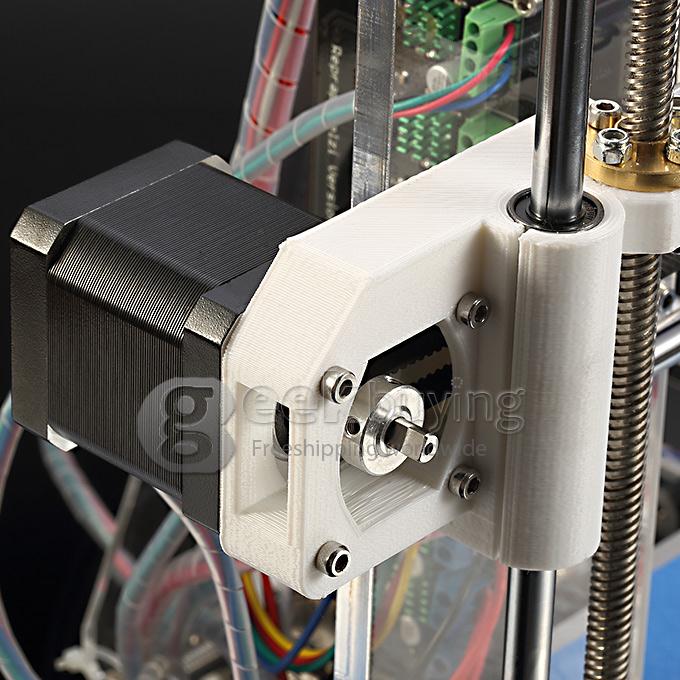
There are several reasons why Lockheed Martin uses 3D printing:
- Reducing the time of production of products - up to 80%;
- Reducing the weight of parts - up to 40%;
- Proven reliability of parts in difficult conditions;
- The most important thing is the possibility of an additional increase in production in the near future.
For example, it takes 18 to 20 months to manufacture fuel tanks for spacecraft using traditional technologies. The production of such a tank by 3D printing takes two weeks. In this case, a better uniformity of the structure of the tank elements is achieved. The tanks are manufactured using a Sciaky printer using EBAM (Electron Beam Direct Manufacturing) technology, in which a bar of metal material is heated by an electron beam.
| Lockheed Martin uses 3D printing in its manufacturing processes. |
Source: https://all3dp. com/ com/ |
Lockheed Martin's 3D printed products have already passed the lab testing stage and are in active use. Some of them travel around our solar system: the Jupiter-exploring Juno satellite has eight 3D-printed brackets, and the Orion spacecraft uses printed high-pressure valves.
Fleet
South Korea is 3D printing loudspeaker grilles for aircraft carriers. Shipping these gratings from Europe took up to seven months and cost $612 each. The printed part is made in 4-5 hours and costs about $35. Printing parts reduces their cost and production time, and localization of production reduces dependence on foreign supplies, which may be delayed or become unavailable for various reasons.
General Electric has contracted with the US Navy to develop software for rapid 3D printing of spare parts for ships, aircraft and other critical military installations. The contract, worth nine billion dollars, is designed for four years and provides for the creation of technology "digital duplicates" - a complex of software, base models and hardware. This technology will be used both for those spare parts that are no longer manufactured, and for new parts of ships and aircraft.
This technology will be used both for those spare parts that are no longer manufactured, and for new parts of ships and aircraft.
| Concept Laser M2 3D printer printing with metal powder. |
| Source: https://all3dp.com/ |
The project is being implemented in two stages: at the first stage, software and hardware parts will be developed, at the second stage they will be combined into a complex capable of quickly creating the necessary products using laser metal melting technology (DMLM).
Ammunition and small arms
The US Army designed and 3D printed a fully functional grenade launcher called "R.A.M.B.O". The development of the grenade launcher took about six months. He shoots grenades also made using 3D printing
| R.A.M.B.O. grenade launcher |
Source: https://all3dp.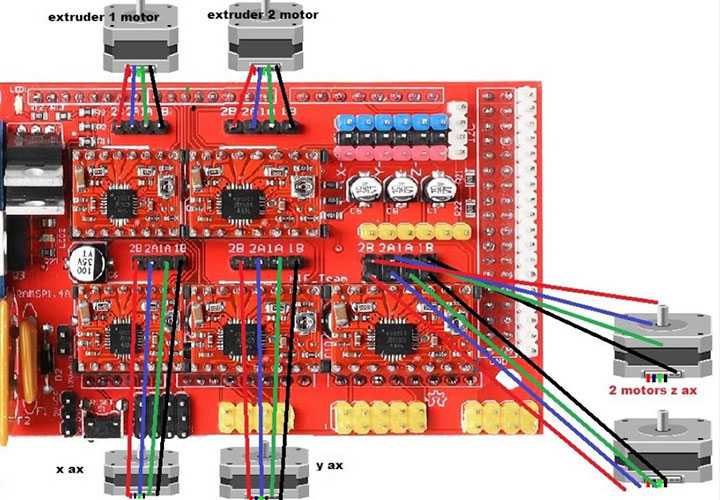 com/ com/ |
The grenade launcher consists of 50 parts, all of which, with the exception of springs and hardware, are printed on a 3D printer.
| 3D printed parts of the R.A.M.B.O. |
| Source: https://all3dp.com/ |
R.A.M.B.O. demonstrated characteristics similar to the M203 underbarrel grenade launcher made in the traditional way.
A US Marine team is 3D printing and testing small explosive containers that can be used on the battlefield.
| 3D printed container for explosives. |
| Source: https://all3dp.com/ |
The development of small arms began in the private sector, with the most primitive pistols. On the Internet, you can find drawings of products such as the sensational Liberator. The first 3D printed pistol was printed on a professional Stratasys Dimension SST printer. The gun is chambered for 9 caliber rounds.mm and is charged during assembly.
The gun is chambered for 9 caliber rounds.mm and is charged during assembly.
| A gun whose main components are made of plastic and printed using a 3D printer. Frame: YouTube. |
| Source: YouTube |
The very possibility of obtaining weapons using 3D printing so excited the public that the drawings of the "Liberator" were withdrawn from public access, and the United States introduced a ban on 3D-printed weapons.
Solid Concepts has created a replica of the .45 Browning M1911 pistol, the Solid Concepts 1911 DMLS, using selective metal laser sintering. The first sample withstood 50 shots, later ones are capable of firing 600 shots without visible damage.
| A working replica of a .45 Browning pistol M1911 - Solid Concepts 1911 DMLS, made by selective metal laser sintering. |
| Source: Solid Concepts Inc |
Recently, the ban on the distribution of 3D printed weapons was lifted by a court decision. So, it is now possible to print weapons in the USA, with some restrictions: they can be no more than 50 mm in caliber and models cannot be freely available. This ban was easily circumvented by Defense Distributed, which posted models of their rifle for sale on one of the online services.
So, it is now possible to print weapons in the USA, with some restrictions: they can be no more than 50 mm in caliber and models cannot be freely available. This ban was easily circumvented by Defense Distributed, which posted models of their rifle for sale on one of the online services.
| M4 rifle from Defense Distributed. |
| Source: https://depositphotos.com/ |
“Our models are not in the public domain because customers pay money for them,” a company spokesman said.
Uniforms and protection
The Vatican decided to use 3D printing technology for the production of traditional Swiss Guard headdresses.
| Swiss Guard. |
| Source: https://all3dp.com/ |
The Swiss Guard is the personal guard of the Pope. From time immemorial, their form was made of metal, but now they have decided to keep up with the times.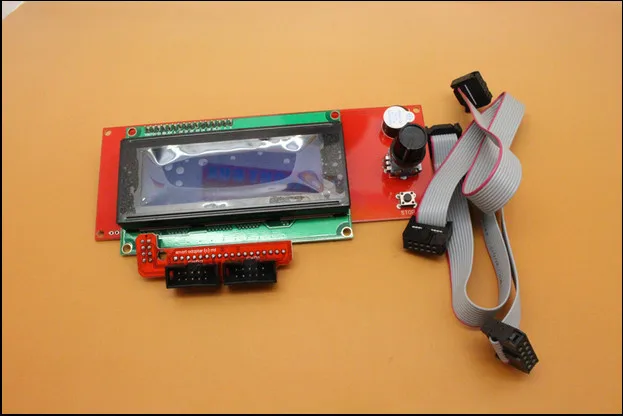 A 3D printed helmet will be significantly cheaper and, more importantly, lighter.
A 3D printed helmet will be significantly cheaper and, more importantly, lighter.
| 3D printed helmet prototype. |
| Source: https://all3dp.com/ |
The helmets are made of PVC and bear the coat of arms of Pope Julius II, who founded the Swiss Guard in 1506.
The US military turned to the creators of the Iron Man costume, a movie character, for help in creating uniforms for the soldier of the future. The military commissioned Legacy Effects to develop and print the prototype components for the TALOS Special Outfit Kit.
TALOS will contain a cooling system to maintain a comfortable temperature in the suit, a tactical display and an integrated exoskeleton.
| The concept of the uniform of the future - a set of special uniforms TALOS. |
Source: http://3dprintingindustry. com/ com/ |
The studio team will join the large team already working on the project, which includes bioengineers, combat veterans and technologists.
Construction
The US Army Research Engineering Team printed a large building in just 21 hours. The area of the building is 47.5 square meters. The barrack-style building is the result of a three-year US Army Construction Engineering Research (ACES) program with a laboratory in Champagne, Illinois.
| 3D printed barracks. |
| Source: https://all3dp.com/ |
Such a short construction time means that such temporary structures will become more accessible with the development of 3D printing. These buildings can be used as housing for refugees or temporary housing in case of natural disasters.
The process of building a 3D printer.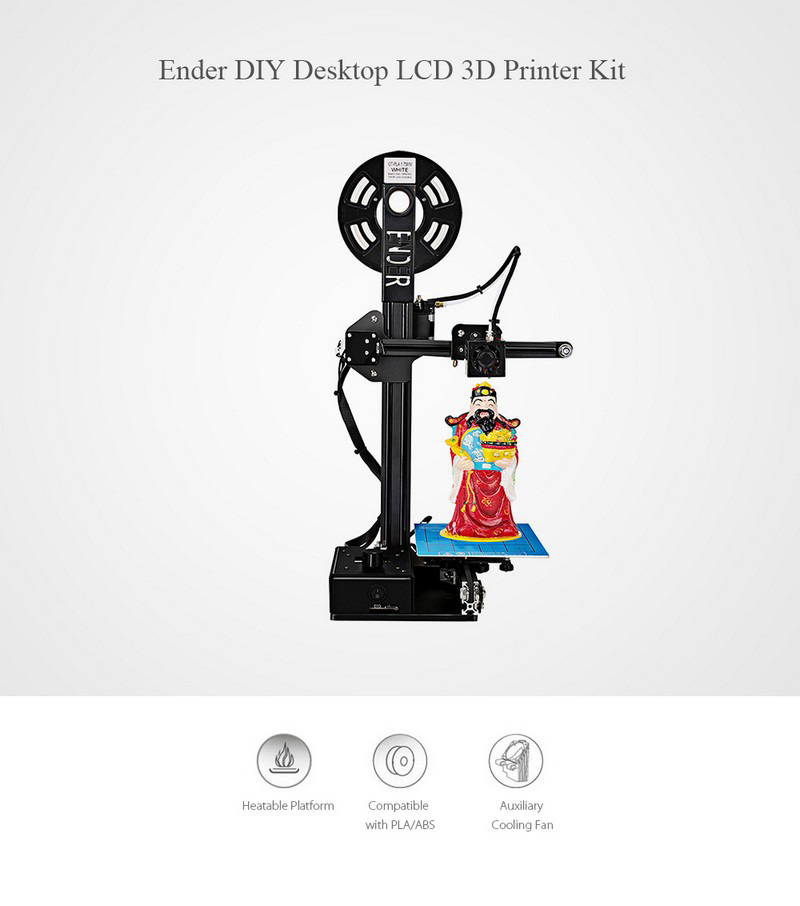 |
| Source: https://all3dp.com/ |
The building looks like an ordinary house, but in the future such buildings can be given any look. Such buildings are also more energy efficient than traditional ones - they require less energy for heating and cooling.
ACES cuts the amount of building materials used in half. Reducing the need for labor is 62%, compared with the construction of plywood structures.
| Laying concrete mix with a construction 3D printer. |
| Source: https://all3dp.com/ |
ACES allows buildings to be printed using local materials.
Self-Sustaining
A collaboration between the US Army Research Laboratory and the Marine Corps has led to the development of a technology to make 3D printed PET filament from plastic waste such as water bottles.
According to the military, water bottles and plastic packaging are the most common litter on the battlefield.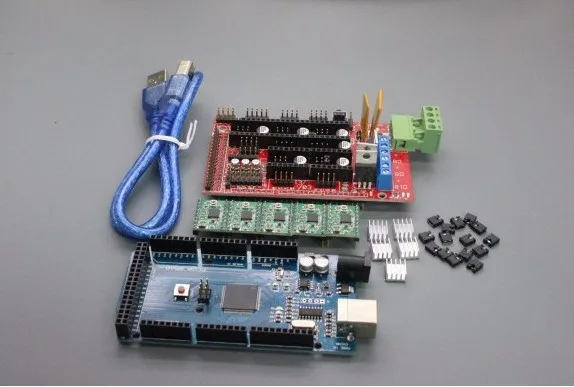 Both US and allied forces produce large amounts of this waste, and the ability to recycle it will reduce the cost of transporting raw materials. The filament obtained from recycled materials, provided that it is properly cleaned and dried, is completely equivalent in tensile strength to its analogue from primary raw materials.
Both US and allied forces produce large amounts of this waste, and the ability to recycle it will reduce the cost of transporting raw materials. The filament obtained from recycled materials, provided that it is properly cleaned and dried, is completely equivalent in tensile strength to its analogue from primary raw materials.
| Joint work of employees of the Research Laboratory of the US Army and the Marine Corps. |
| Source: https://all3dp.com/ |
A plant is being developed, housed in a standard shipping container, that will allow the production of filament from waste.
The US Army is also developing food printers. Their advantages are obvious:
- the possibility of reducing the cost of food, compared with the traditional delivery of rations from abroad;
- the possibility of compiling an individual menu, in accordance with the preferences of each soldier;
- the possibility of individual balancing of the diet, depending on the dietary needs of each soldier.

The printer, like classic 3D printers, stacks components in layers.
| 3D printed food. |
| Source: https://all3dp.com/ |
The printer uses the ultrasonic agglomeration method to 3D print small snacks.
Electronics
Researchers at the University of Massachusetts Lowell have developed a new way to 3D print conductive components for radar systems. They have created a new type of ink that allows radars to be made using 3D printing.
| Electronic components obtained by 3D printing. |
| Source: https://all3dp.com/ |
The development was sponsored by Raytheon, one of the defense industry companies.
According to the developers: “The use of this technology makes it possible to obtain cheaper and more versatile systems than those obtained by classical methods. This technology has obvious advantages in the military sphere, but it can also be used in civilian industry, for example, in the production of weather stations or unmanned vehicles. The main problem was obtaining ink with desired properties, capable of working with high-frequency radiation.”
This technology has obvious advantages in the military sphere, but it can also be used in civilian industry, for example, in the production of weather stations or unmanned vehicles. The main problem was obtaining ink with desired properties, capable of working with high-frequency radiation.”
| Applying ink to a plastic plate. |
| Source: https://all3dp.com/ |
The 3D printer is equipped with two heads with different operating principles. One applies the ink by spraying, the second fixes them by microvibration. Radar system components such as a voltage controlled capacitor (varicap), phase shifter (for electronic control of phase array radar systems) and frequency filters can be manufactured using this technology.
The ink material is based on nanoparticles that can be injected into molten plastic and then solidify with it, creating conductive structures.
The US Air Force Research Laboratory teamed up with American Semiconductor to create a silicon-polymer memory chip.
Using 3D printing technology, they have developed a new ultra-flexible chip with built-in sensors.
| Dan Berrigan holding the new flexible chip. |
| Source: https://all3dp.com/ |
According to American Semiconductor, the thickness of the silicon wafer is 2000 angstroms. This tiny chip can measure humidity levels, temperature, muscle fatigue, and so on. This makes it ideal for use in new technologies for monitoring the well-being of wounded soldiers or the elderly.
Flexible electronics technology is being developed not only by research laboratories, but also by industry giants.
Apple, Boeing and the Massachusetts Institute of Technology formed an alliance to collaborate with the US Department of Defense on flexible electronics.
The goal of the alliance is to have high quality flexible electronics by 2020.
The Department of Defense plans to provide a consortium called the FlexTech Alliance with $75 million over 5 years and raise $96 million in additional funding.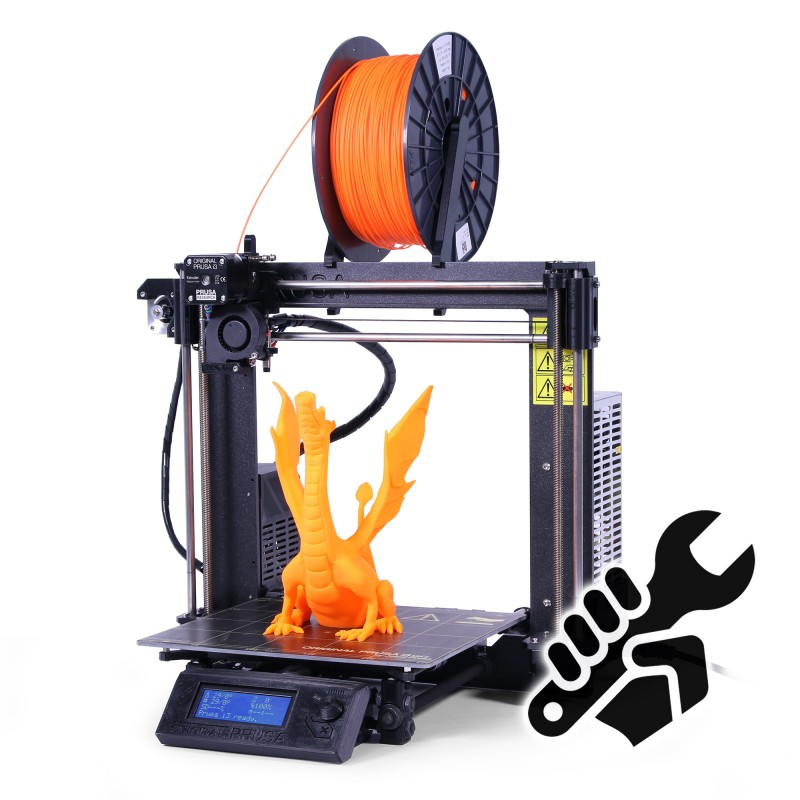
| Smart clothes. |
| Source: https://all3dp.com/ |
The consortium includes 96 companies, 11 specialized laboratories, 42 universities and 14 state and regional organizations. The key partners of the consortium are Apple, Boeing, General Electric, General Motors, Lockheed Martin, Motorola Mobility, Qualcomm and many others. Partner universities include Cornell, Harvard, Stanford, New York University and the Massachusetts Institute of Technology.
Practical applications will be primarily focused on military targets such as uniforms with vital sign monitors. Pressure sensors can also be installed on vehicles to monitor deformation in key areas.
The civilian application of such microcircuits will help athletes control body function and improve performance, and people suffering from cardiovascular diseases, control and prevent seizures. This technology will allow hospitals to monitor their patients en masse.
Concepts or Looking Ahead
British scientists and engineers are working on growing military drones using chemical technology.
| Hydroponic chemputter. |
| Source: https://all3dp.com/ |
Military developers explore all possible and impossible technologies. In this case, they are working on a "chemcomputer". “Chemputer” is a registered trademark of BAE Systems. The technology is being developed by Professor Lee Cronin of the University of Glasgow and is a 3D printing of biomaterial drones and aircraft.
Unlike classic 3D printers, a chemputter performs chemical reactions at the molecular level, creating everything from electronics to wings.
| Drone prototypes. |
| Source: https://all3dp.com/ |
While British scientists are inventing new technologies in printing for the military department, simple makers are creating weapons of the future using conventional 3D printers.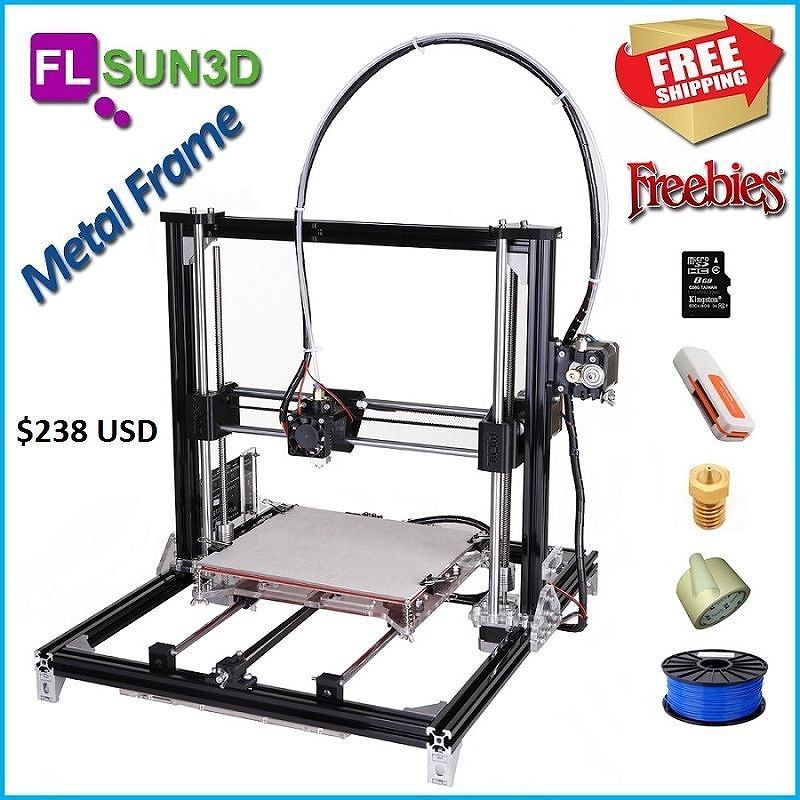
So, David Wirth created a hand railgun in his workshop.
| David Wirth with his railgun. |
| Source: https://all3dp.com/ |
Possibly inspired by the computer game Quake, he created this weapon using CAD, a 3D printer and an Arduino platform. The railgun can use aluminum or graphite bullets as ammunition, firing them at a speed of 250 m/s. The design is based on six huge capacitors, which, with a total weight of about nine kilograms, store more than 1800 joules of energy for each shot. The railgun also consists of batteries, two parallel contact rails and a pneumatic ammunition supply system.
| Diagram of a railgun by David Wirth. |
| Source: https://all3dp.com/ |
Conclusion
3D printing technology is increasingly used in the military.